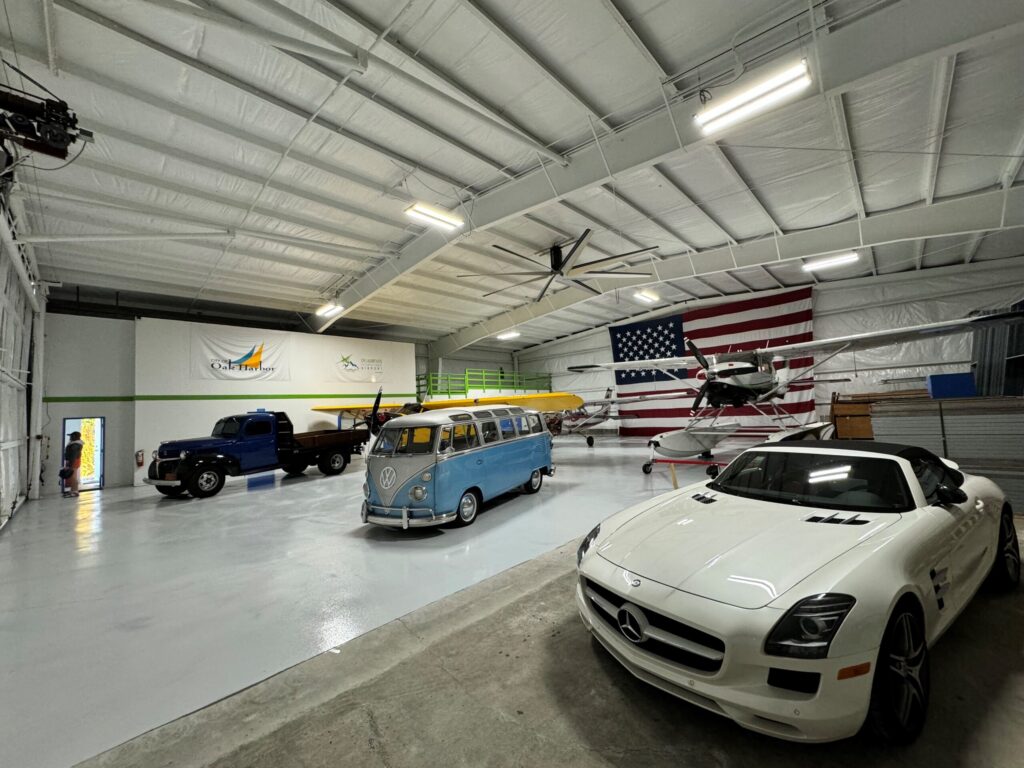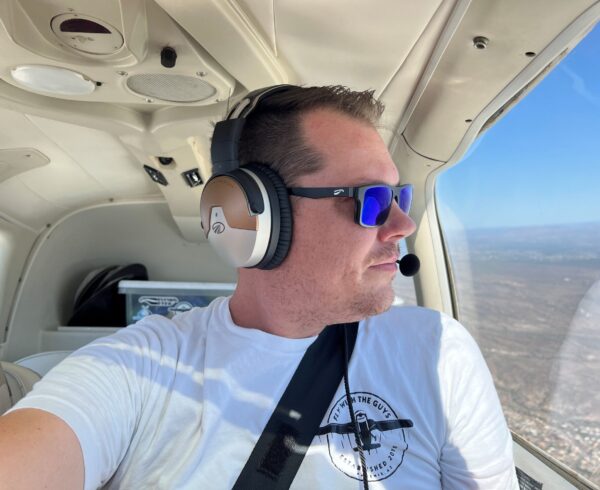Two things quickly stand out when you meet pilot Robert DeLaurentis. First, he does nothing by halves. Second, he always has a higher purpose. He finally realized his lifelong dream of becoming a pilot after serving in the Gulf War in the U.S. Navy and then building a successful San Diego real estate business. In the 13 years since earning his pilot’s license, he has flown two solo missions circumnavigating the earth, published six books, founded an international peace movement and a non-profit foundation, worked to encourage young people towards STEM education, and participated in two scientific studies, an environmental one with Scripps Institution of Oceanography and a NASA-backed science experiment to help advance the future of interstellar travel. His adventures and interviews with people all over the world will be chronicled in a soon-to-be released movie, Peace Pilot, on Apple TV+, and he was recently inducted into the San Diego Air and Space Museum Hall of Fame.
So, when DeLaurentis bought a run-down airport on Whidbey Island, in Washington State, it was never going to be just a place to land. It quickly became a launching pad for more dreams.
After living in San Diego for 35 years, DeLaurentis was ready for a change. He visited a mentor who lives in Fall City, Washington, liked the area, and found a home on Whidbey Island. Like any pilot, his next stop was to check out the local GA airport. What he found at the old A.J. Eisenberg airport, near Oak Harbor, was a sad place with leaking roofs, runways that were shot, navigation aids that didn’t work, and rusted old fuel pumps. He says, “I took one look and thought, ‘I’m never coming back here.’” He moved his planes to nearby Anacortes, but he kept thinking about the old airport.
Eisenberg was for sale, and DeLaurentis also started thinking about his next adventure in aviation. After flying solo over the poles, he decided maybe his next project should be ground-based. “Here on Whidbey, we are the gateway to the popular San Juan Islands, and Seattle is only 20 minutes away. Plus, the airport had an extra 40 acres that had potential. When I thought about my business life renovating apartment buildings, I realized airports need electrical and plumbing, too. Maybe I had the skills to revive this airport.”
DeLaurentis did due diligence and determined that the old fuel tanks were probably leaking, a potentially expensive environmental cleanup. After negotiating the purchase plus some local politics and red tape, he finally owned the airport, and the massive renovation began. DeLaurentis and a team of contractors and volunteers hauled away 70 cubic yards of garbage. The old fuel tanks were pulled out and, in a stroke of luck, turned out not to be leaking, saving thousands of dollars that could instead go into the total airport renovation, including electricals, plumbing, navigation aids, mobile fuel tanks, security cameras, and more. By funding the project himself, DeLaurentis was able to do in six months what had been projected to take six years. The last major step is paving and, pending site assessment, widening the runways to 50 feet, which will allow the airport to handle local commuter flights and the larger turbo-prop planes that Life Flight uses. As DeLaurentis says, “At 60 feet, the world opens up.”



At this point, the sky really is the limit for what is now DeLaurentis International Airport. DeLaurentis is looking forward to welcoming flights from Canada, and he’s working with the city of Oak Harbor to connect their infrastructure with the airport. The Washington Department of Transportation has expressed interest in DeLaurentis Airport as an urban air mobility hub. He’s working with AOPA to make it a blueprint for privately owned, publicly used airports. DeLaurentis has also turned the main hangar into a multi-purpose space with a small aviation museum plus amenities for a convention and gathering place.
DeLaurentis is talking to Erik Lindbergh about doing a piece, a scaled-down plane, that kids can get into, take pictures in. “We’re talking about donating use of the airport for a musical event in the main hangar. It’s a place to get kids excited about aviation and also a fun venue. The community doesn’t have a great spot for events, and now they will.”
Always closest to DeLaurentis’ heart is introducing kids to the wonders of flight. He’s working with the two high schools on the island to launch his Discover program named “Kids Fly”, giving up to 60 students a month the chance to experience aviation firsthand as well as a free ground school. He’s modifying his polished aluminum Cessna 172 “to look cool for the kids, with a digital multi-purpose display, a Garmin Navigator, and lots of buttons to push on the panel. They’ll see that flying is the ultimate video game. And they’ll be able to talk to each other and hear what’s happening using cool ANR aviation headsets, a set of Zulu 3 headsets, donated by Lightspeed.” A member of Cascade Warbirds is donating the fuel for the flights, and DeLaurentis is working with Redbird to provide students with a simulator. In the near future, he’d like to recruit a younger instructor with a low-wing plane so the students can also fly with someone close to their own age.


As his airport has taken on new life, DeLaurentis has come to realize that “an airport has all these layers. One of the enjoyable things has been watching all these people come together, a melting pot of people. And now that the airport looks nice and is working well, people don’t have to make that big leap of faith to see where it’s going.” Part of his grand plan to encourage other private owners to make that leap. “My first priorities are the kids, the community, and Life Flight. But there’s another issue here for aviation: if we assume that GA airports should always be free, we’ll keep losing airports. Paying a $20 landing fee is one way for pilots to take a little more ownership in airports. Another way is for pilots or groups to buy small airports and rejuvenate them. The bottom line is that it just takes enough people that believe in the cause. Is the idea daunting? Yes. Is it scary? Yes. But I truly believe that if you’re not afraid, maybe your dream isn’t big enough.”
To learn more about Robert DeLaurentis and the projects he has created or have been a part of, check out the links below:















Leave a Comment